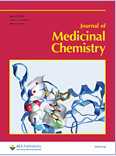J Med Chem:TMFS方法用于检测老药新用
2012-08-06 T.Shen 生物谷
随着开发新药成本的上升,科学家们正在开发出新方法,看看是否可以将已有的药物用在治疗其他疾病上面,再利用现有药品的技术可以减少药物研发成本,并且可以为病人的快速治疗提供帮助,相关研究成果刊登在了近日的国际杂志Journal of Medical Chemistry上。 研究者Sivanesan和其同事解释道,目前世界上药企正在减少其药物研发投入,因为新的药物开发方法非常昂贵、耗时而且最终以失败告终
随着开发新药成本的上升,科学家们正在开发出新方法,看看是否可以将已有的药物用在治疗其他疾病上面,再利用现有药品的技术可以减少药物研发成本,并且可以为病人的快速治疗提供帮助,相关研究成果刊登在了近日的国际杂志Journal of Medical Chemistry上。
研究者Sivanesan和其同事解释道,目前世界上药企正在减少其药物研发投入,因为新的药物开发方法非常昂贵、耗时而且最终以失败告终。科学家们知道,已经得到批准的药物或许对治疗其它疾病会有好的效果,然而识别老药物是否具有新的治疗价值的方法缺少其精准度,而且会有很多缺点。因此研究者开发出了一款电脑计算方法“成串-比对-过滤-流线方法”(Train-Match-Fit-Streamline,TMFS),这种方法使用11中因子开快速将药物和疾病配对。
研究者使用TMFS方法发现了药物西乐葆(治疗疼痛和炎症)的新用途-可以治疗某些癌症。类似地,他们发现了一种治疗钩虫的药物可以被用于切断攻击癌症肿瘤的血液来抑制癌症扩散。这种TMFS方法揭示了当前世界范围内27,000种临床活性剂药物可以作为新的药物来治疗别的种类的疾病。
相关研究由国立卫生研究院提供支持。
编译自:Discovering New Uses for Old Drugs

doi:10.1021/jm300576q
PMC:
PMID:
Predicting New Indications for Approved Drugs Using a Proteochemometric Method
Sivanesan Dakshanamurthy*†, Naiem T. Issa†, Shahin Assefnia†, Ashwini Seshasayee‡, Oakland J. Peters†, Subha Madhavan†, Aykut Uren†, Milton L. Brown†, and Stephen W. Byers†
The most effective way to move from target identification to the clinic is to identify already approved drugs with the potential for activating or inhibiting unintended targets (repurposing or repositioning). This is usually achieved by high throughput chemical screening, transcriptome matching, or simple in silico ligand docking. We now describe a novel rapid computational proteochemometric method called “train, match, fit, streamline” (TMFS) to map new drug–target interaction space and predict new uses. The TMFS method combines shape, topology, and chemical signatures, including docking score and functional contact points of the ligand, to predict potential drug–target interactions with remarkable accuracy. Using the TMFS method, we performed extensive molecular fit computations on 3671 FDA approved drugs across 2335 human protein crystal structures. The TMFS method predicts drug–target associations with 91% accuracy for the majority of drugs. Over 58% of the known best ligands for each target were correctly predicted as top ranked, followed by 66%, 76%, 84%, and 91% for agents ranked in the top 10, 20, 30, and 40, respectively, out of all 3671 drugs. Drugs ranked in the top 1–40 that have not been experimentally validated for a particular target now become candidates for repositioning. Furthermore, we used the TMFS method to discover that mebendazole, an antiparasitic with recently discovered and unexpected anticancer properties, has the structural potential to inhibit VEGFR2. We confirmed experimentally that mebendazole inhibits VEGFR2 kinase activity and angiogenesis at doses comparable with its known effects on hookworm. TMFS also predicted, and was confirmed with surface plasmon resonance, that dimethyl celecoxib and the anti-inflammatory agent celecoxib can bind cadherin-11, an adhesion molecule important in rheumatoid arthritis and poor prognosis malignancies for which no targeted therapies exist. We anticipate that expanding our TMFS method to the >27 000 clinically active agents available worldwide across all targets will be most useful in the repositioning of existing drugs for new therapeutic targets.
本网站所有内容来源注明为“梅斯医学”或“MedSci原创”的文字、图片和音视频资料,版权均属于梅斯医学所有。非经授权,任何媒体、网站或个人不得转载,授权转载时须注明来源为“梅斯医学”。其它来源的文章系转载文章,或“梅斯号”自媒体发布的文章,仅系出于传递更多信息之目的,本站仅负责审核内容合规,其内容不代表本站立场,本站不负责内容的准确性和版权。如果存在侵权、或不希望被转载的媒体或个人可与我们联系,我们将立即进行删除处理。
在此留言








#TMFS方法#
107
#Med#
67